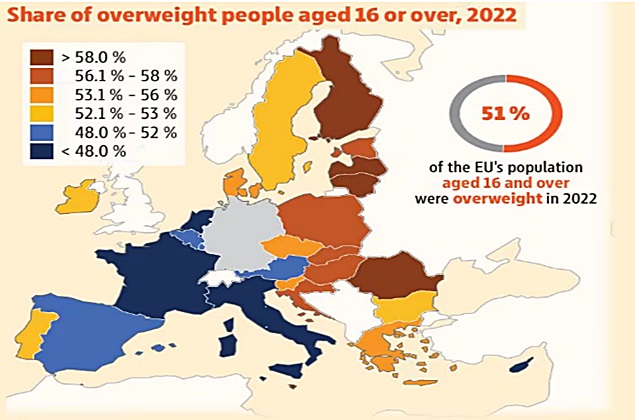
The Global Obesity Problem: A Growing Crisis
As the global obesity crisis continues to escalate, it is estimated that more than half of adults will be overweight by 2050. The food industry has been identified as a major contributor, according to FoodNavigator.
The Rise of Childhood Obesity
It is also predicted that one-third of children and adolescents will be overweight in the next 25 years, as the global obesity epidemic continues to penetrate society.
This equates to 3.8 billion adults and 746 million children and adolescents worldwide, according to the Global Burden of Diseases Study BMI Collaborators' analysis, published in The Lancet on World Obesity Day.
Massive global failures to counter the obesity epidemic are to blame, the study suggests. In 1990, there were 731 million overweight and obese adults worldwide, a number that rose to 2.11 billion in 2021.
Nearly half of the global adult population (1 billion men and 1.11 billion women aged 25 and older) was estimated to be overweight or obese in 2021. The prevalence of obesity doubled worldwide between 1990 and 2021, increasing from 5.8% to 14.8% in adult men and from 8.8% to 18.5% in adult women.
Approximately 198 million children were overweight or obese in 1990, compared to 493 million in 2021.
How Many People Will Be Obese by 2050?
There will be a 121% increase in the number of young people globally defined as obese, with the total number of obese children and adolescents expected to reach 360 million by 2050.
"The unprecedented global epidemic of excess weight and obesity is a profound tragedy and a monumental societal failure," said lead author Professor Emmanuela Gakidou from the Institute for Health Metrics and Evaluation (IHME), University of Washington, USA.
Countries already experiencing high levels of obesity include Oceania and North Africa and the Middle East, where over 62% of adult men in Nauru, the Cook Islands, and American Samoa, and over 71% of adult women in Tonga and Nauru were living with obesity in 2021.
Among high-income countries, the United States had the highest obesity rates, with approximately 42% of men and 46% of women affected in 2021.
By 2050, the highest number of overweight and obese adults is expected to be in China (627 million), India (450 million), and the U.S. (214 million). The number in sub-Saharan Africa is projected to increase by over 250%, reaching 522 million. The overall increase will be driven by population growth.
In Europe, nearly 51% of the population aged 16 and over is overweight, with 17% classified as obese, according to Eurostat.
"Obesity rates are skyrocketing in sub-Saharan Africa, with 522 million adults and over 200 million young people expected to be overweight or obese by 2050," said co-author Awoke Temesgen, Associate Clinical Professor at IHME.
"This has added a double burden to already overstretched health systems, which are ill-equipped to handle the extraordinary rise in obesity-related diseases."
How to Stop the Rising Global Obesity Rates
Urgent action is needed to introduce preventive initiatives, such as policies regulating unhealthy food marketing and increasing outdoor activity areas for schoolchildren, Temesgen emphasized.
Younger generations of consumers are gaining weight faster than previous generations, with obesity appearing earlier and increasing the risk of health complications such as diabetes, heart disease, and cancer at younger ages, the report states.
Five-year action plans must be urgently implemented to help reduce obesity rates and establish new targets for the post-2030 Sustainable Development Goals era.
The authors call for more concerted efforts to provide comprehensive, transdisciplinary interventions tailored to each country’s unique socio-demographic, economic, environmental, and commercial situation.
"Obesity prevention must be at the forefront of policies in low- and middle-income countries," said co-lead author Dr. Jessica Kerr from the Murdoch Children's Research Institute in Australia.
"Policy actions in these regions must balance the challenges of overnutrition with undernutrition and stunted growth, with interventions ranging from supporting nutritious diets and regulating ultra-processed foods to promoting maternal and child health programs that encourage pregnant women to eat healthily and breastfeed."





